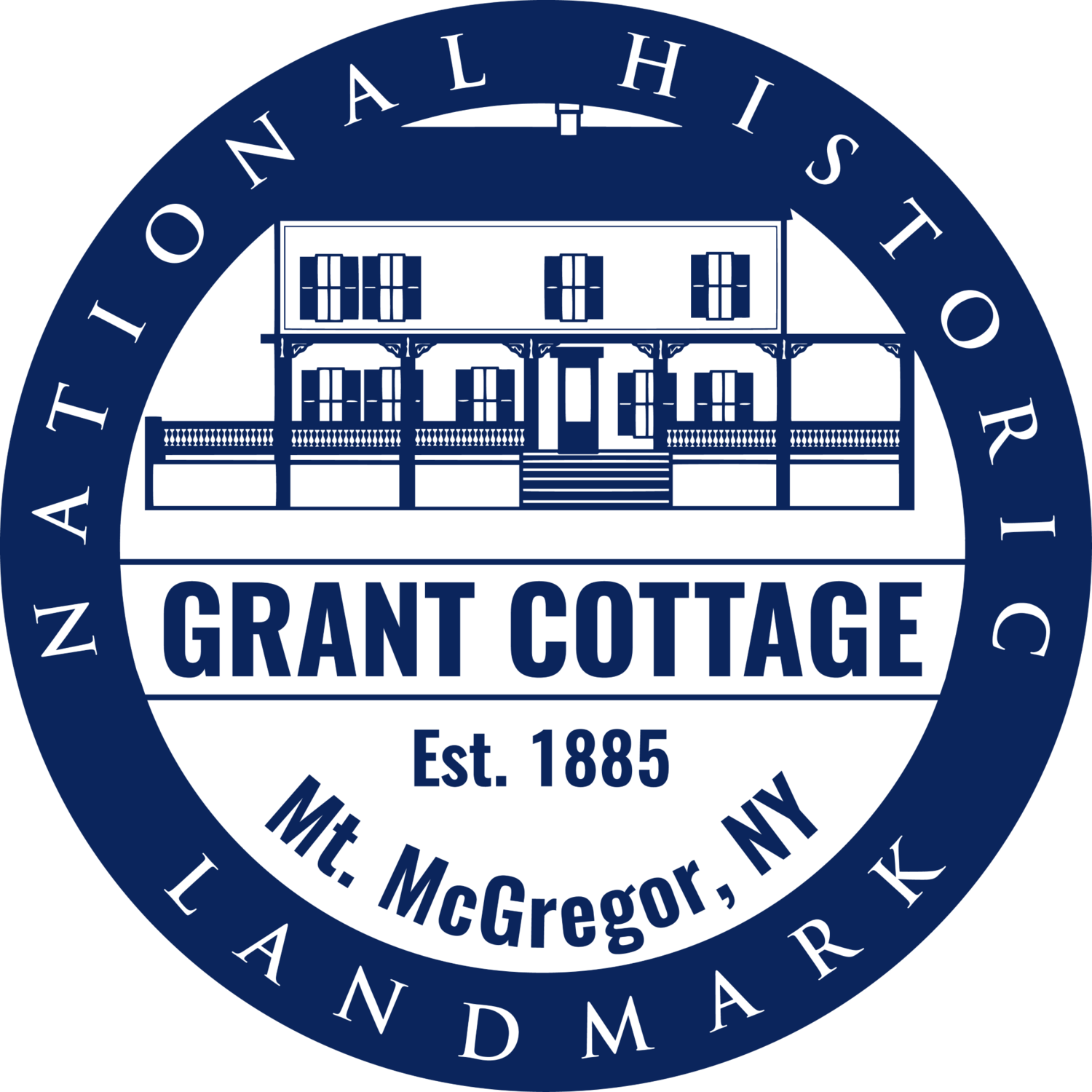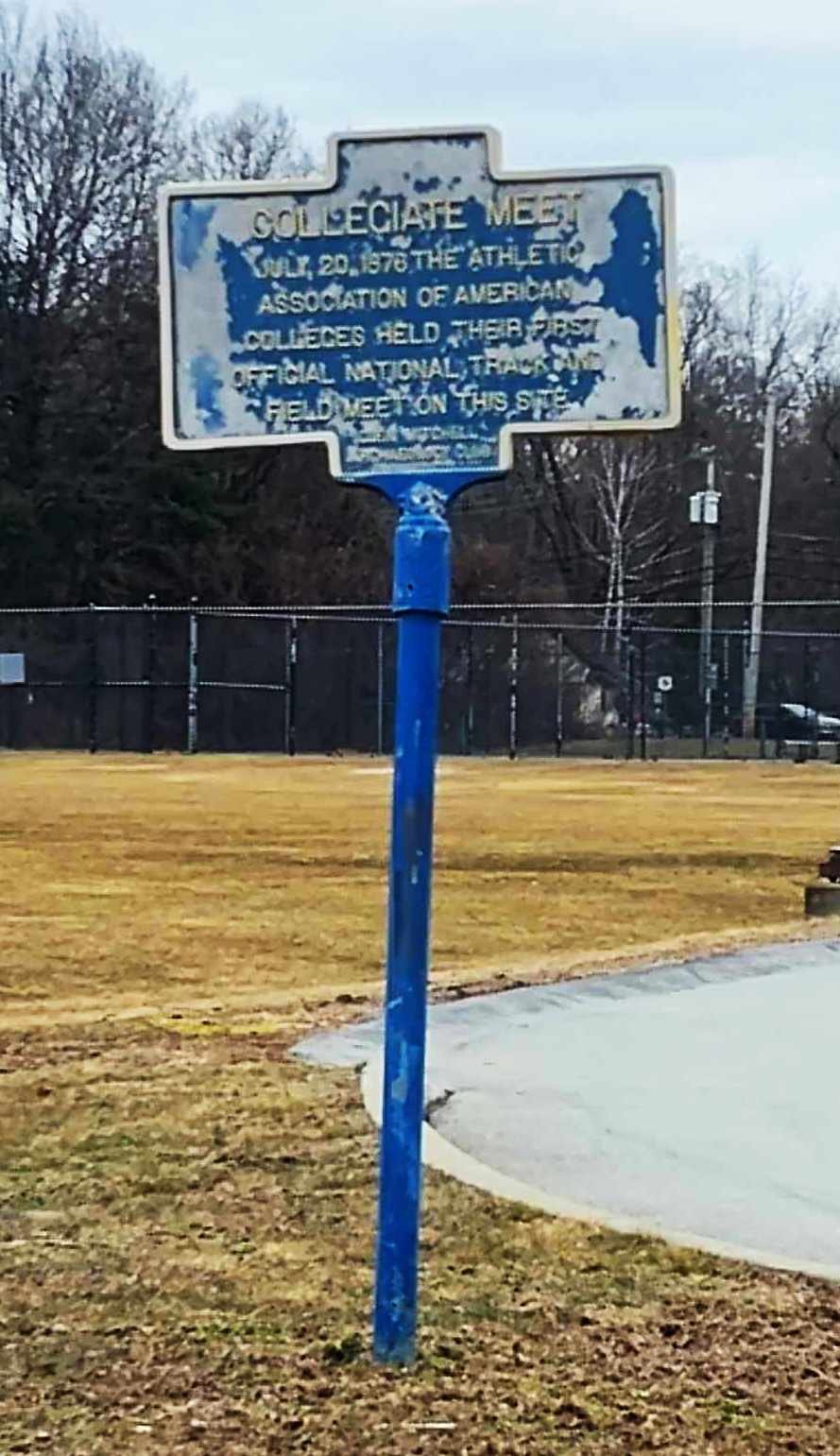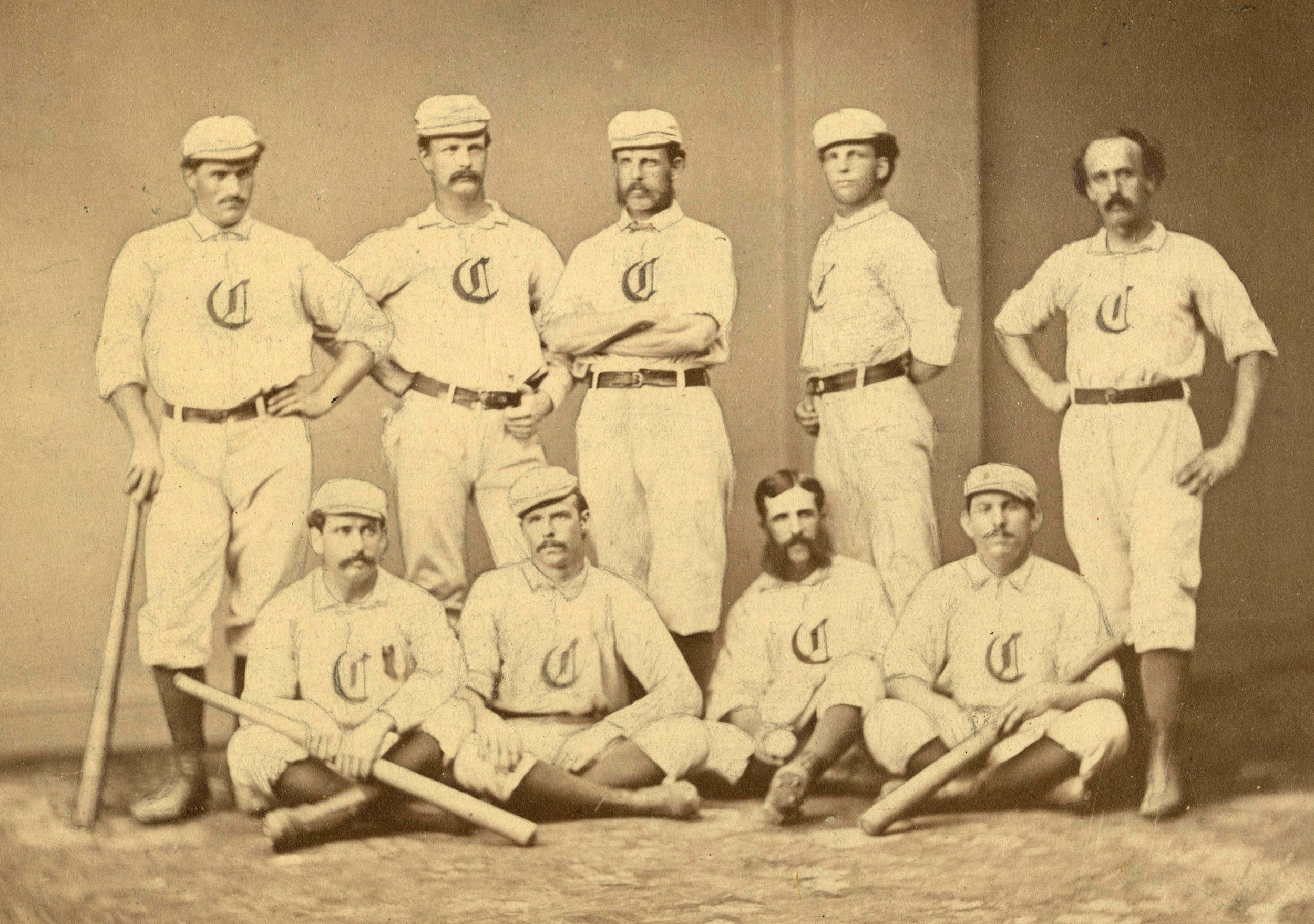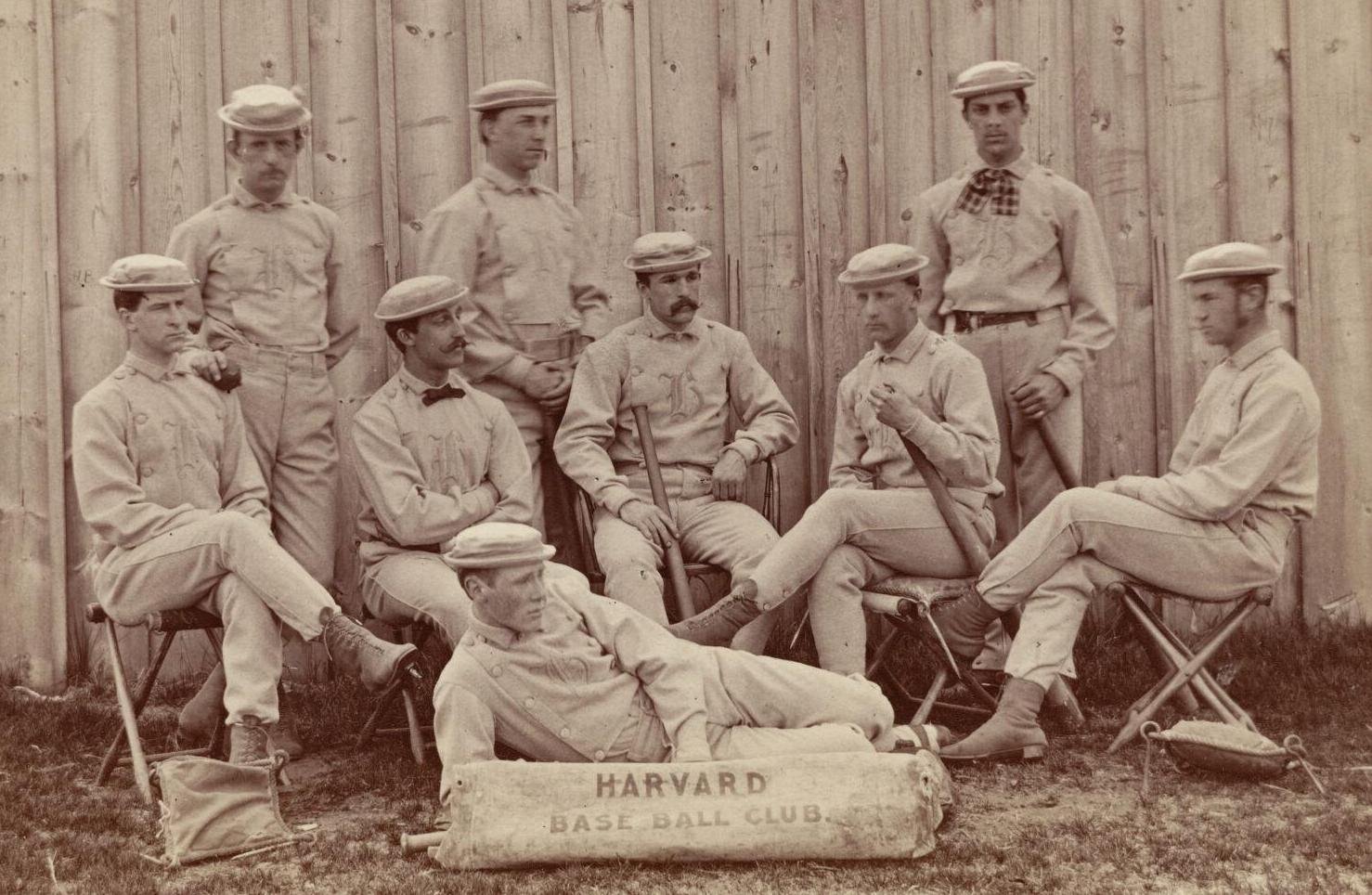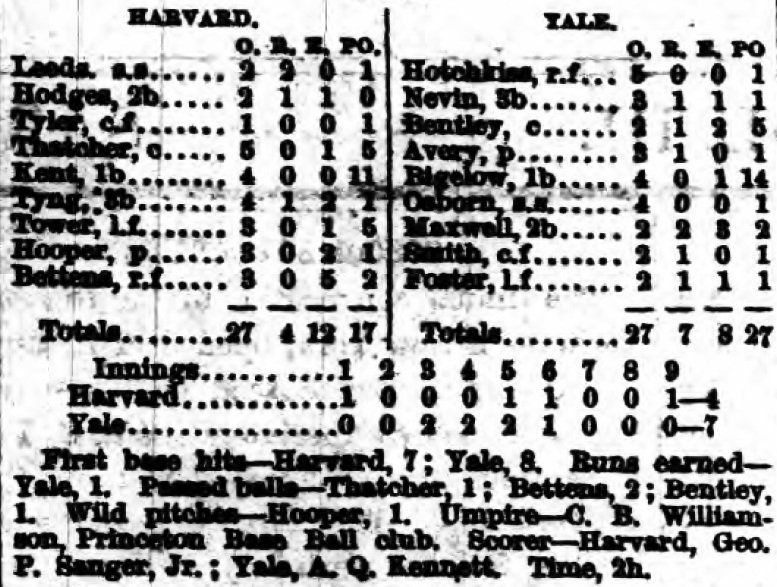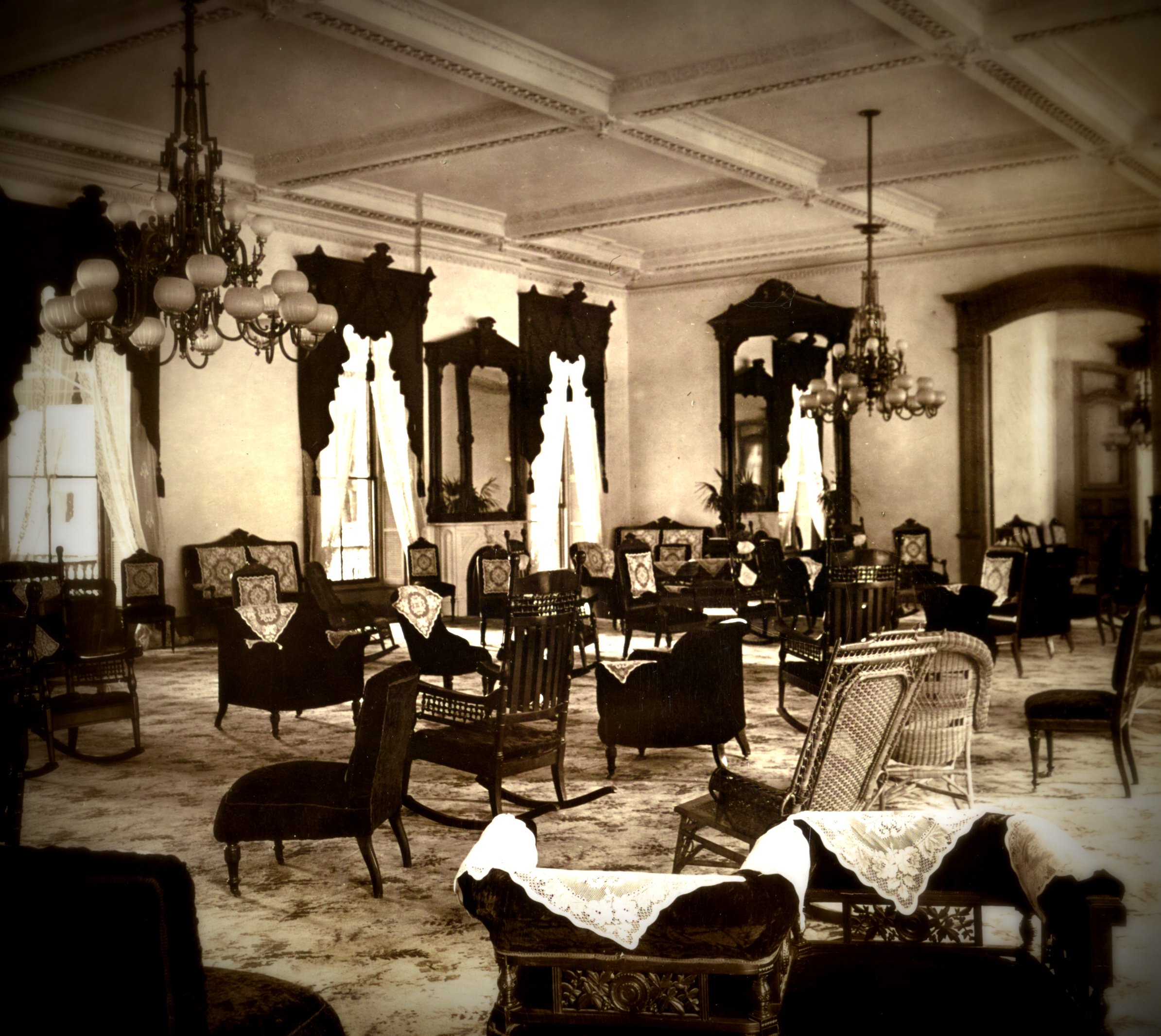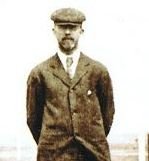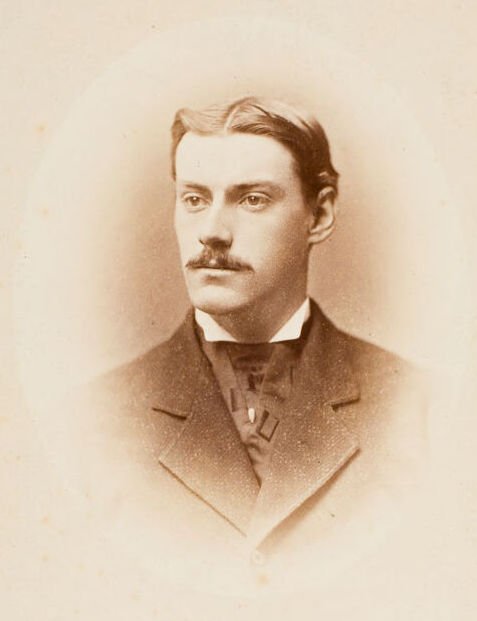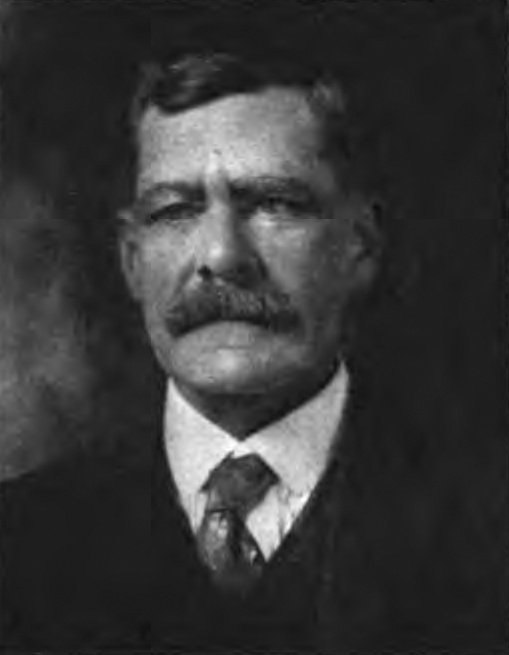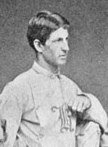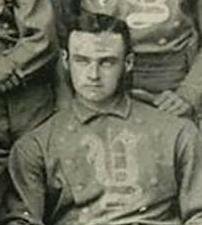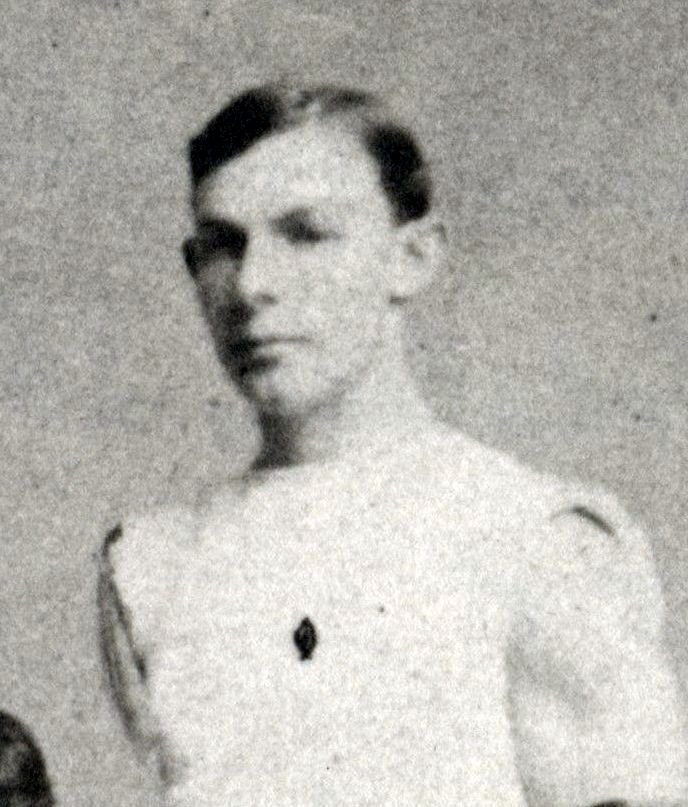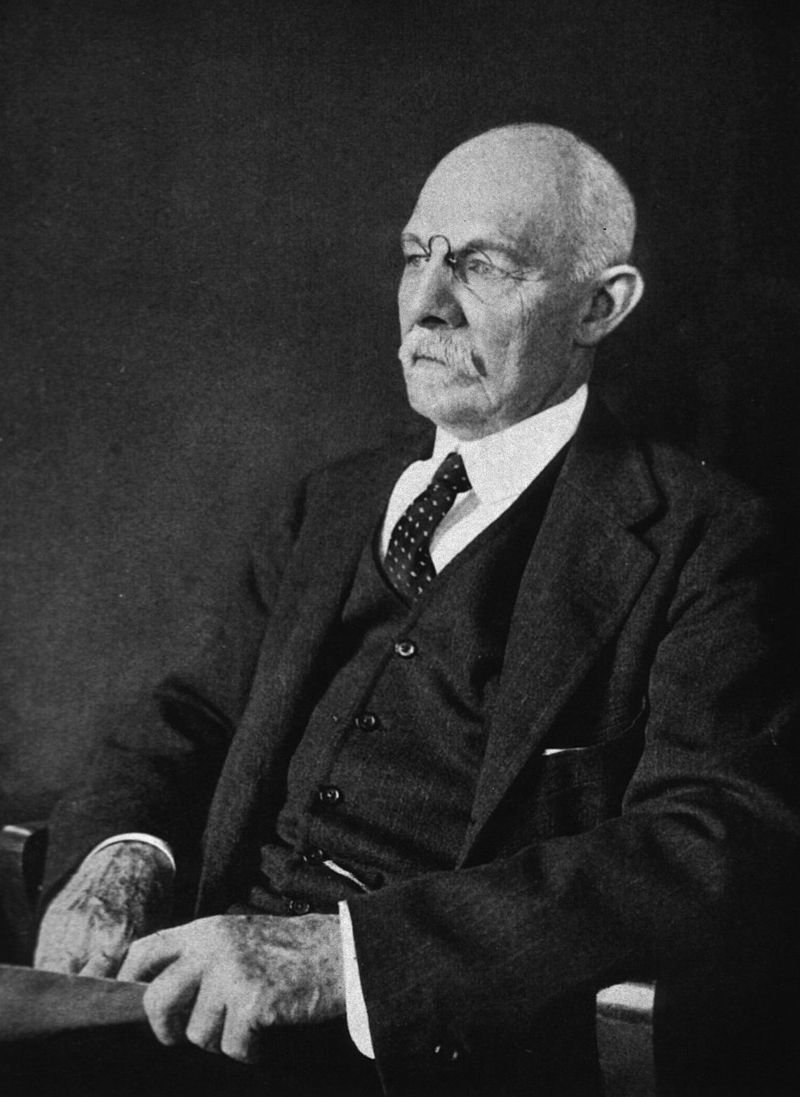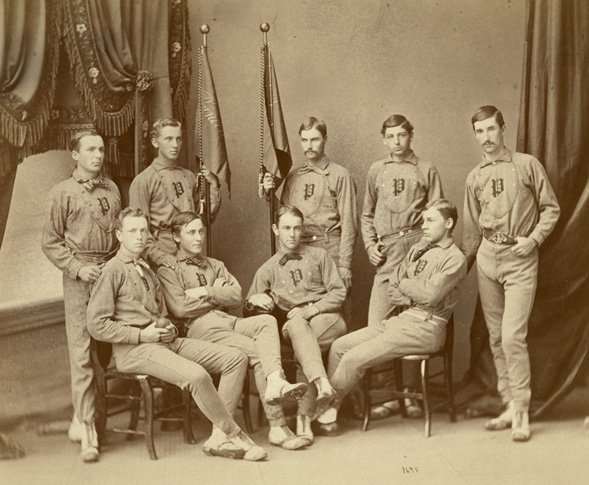Play Ball!
President Grant enjoys the national pastime
““Baseball is the very symbol, the outward and visible expression of the drive and push and rush and struggle of the raging, tearing, booming nineteenth century.””
In the summer of 1874 Saratoga Springs, New York was gripped by intercollegiate competitive fever. Multiple sporting events featuring some of the best Ivy League athletes were descending upon the resort town in the middle of July. Good thing that was the year the four massive hotels, Congress Hall and the Grand Central, Grand Union, and United States Hotels, were in operation because the sleepy winter city of 9000 residents now had to accommodate tens of thousands of guests. The weather would prove a menace, causing multiple delays to the competitions and frustrating the excited athletes and spectators. One of those competitions, a “base ball” match, pitted the rivals Yale and Harvard against each other. One conspicuous visitor would be noted among the attendees, President Ulysses S. Grant. Although the rowing regatta at nearby Saratoga Lake was the main attraction, the sport of baseball was becoming more firmly established as the “nation’s past-time” and the presence of a U.S. President at such an event certainly provided a significant boost.
Congress Hall 1874
President Grant, and his party, consisting of First Lady Julia, his two sons, Ulysses Jr. (a student at Harvard) and Jesse (a student at Cornell), Miss Drexel (daughter of a family friend), and Orville Babcock (the President’s personal secretary) arrived on the train in Saratoga on Tuesday, July 14th. It was his fourth visit to the resort town since the end of the Civil War in 1865. They had left one popular resort town in Long Branch, New Jersey for another. The expected presence of the President would only add to the palpable air of excitement surrounding the highly competitive spectator events, “The ladies put on their best dresses, the bands prepared their most resounding national music, Saratoga wore high-heeled shoes all day because a President had come.” As his party arrived at Congress Hall that morning, Grant, wearing a white linen duster and carrying an umbrella, was immediately confronted by the team spirit pervading the town as he acknowledged a student wearing a magenta ribbon in support of his institution Harvard. The summer resort town was abuzz with the talk of sporting competitions including rowing, track, and baseball. Young boys and carriage drivers sold ribbons, badges, and other similar items for visitors to don in support of their favorite team or teams. The activities drew national press attention as Saratoga accommodated perhaps its largest influx of visitors up to that date, including the many college students enamored by the resort town and its charms.
““This was the first great treaty between fashion and athletics, gown and town.””
The Harvard and Yale “nines” would play against each other at the Glen Mitchell estate, just a short distance outside Saratoga Springs. Coincidentally the games would be played only eight miles north of the birthplace of Abner Doubleday in Ballston Spa, a Civil War general once credited with inventing baseball.
1874 Birds-eye view of Saratoga Springs and Saratoga Lake with the Glen Mitchell in the upper right corner.
Glen Mitchell advertisement from the Saratogian newspaper 1876.
Caleb Mitchell
The Glen Mitchell estate was established by businessman, politician, and inventor of the Refridgerator Bottle Rack Caleb Mitchell in the early 1870s. Caleb, known for his controversial gambling-related enterprises, operated it as a resort along with his brother George. The 45-acre resort, nestled at the base of a pine-forested ridge, featured a large “Swiss cottage style” hotel, stables, racetrack, and, notably, a baseball diamond. The location gained wide notoriety as its beautiful grounds, including four large exhibition buildings, were utilized in the early years to host the Saratoga County Fair. In 1872 the 7th Regiment of the New York National Guard used some of the expansive estate for their training grounds dubbing it Camp Sherman (named for U.S. Grant’s friend and fellow general, William T. Sherman). Edward Townshend and Alexander Shaler, generals who had served in the Civil War, came to review the troops as did thousands of visitors during the week-long encampment. Public spectacles and unique entertainment were also a common feature of the resort. One individual jogged 100 miles around the track in 23 hours and, on another occasion, a Mexican horsemanship/herding demonstration was held. The summer of 1873 saw champion trapshooter Captain Adam H. Boagardus compete in a marksmanship competition. In the summer of 1874, a medieval-styled ring-jousting competition was held, and in the fall, a hot air balloon trapezist nearly died when his balloon deflated while doing a show. These events and others helped to establish the resort as a popular entertainment and pleasure ground that was described as “one of the most romantic places in Saratoga.”
Birdseye view of the Glen Mitchell estate. Building “12” is the Glen Mitchell Hotel with the fairground buildings and toboggan run to the left. (1888)
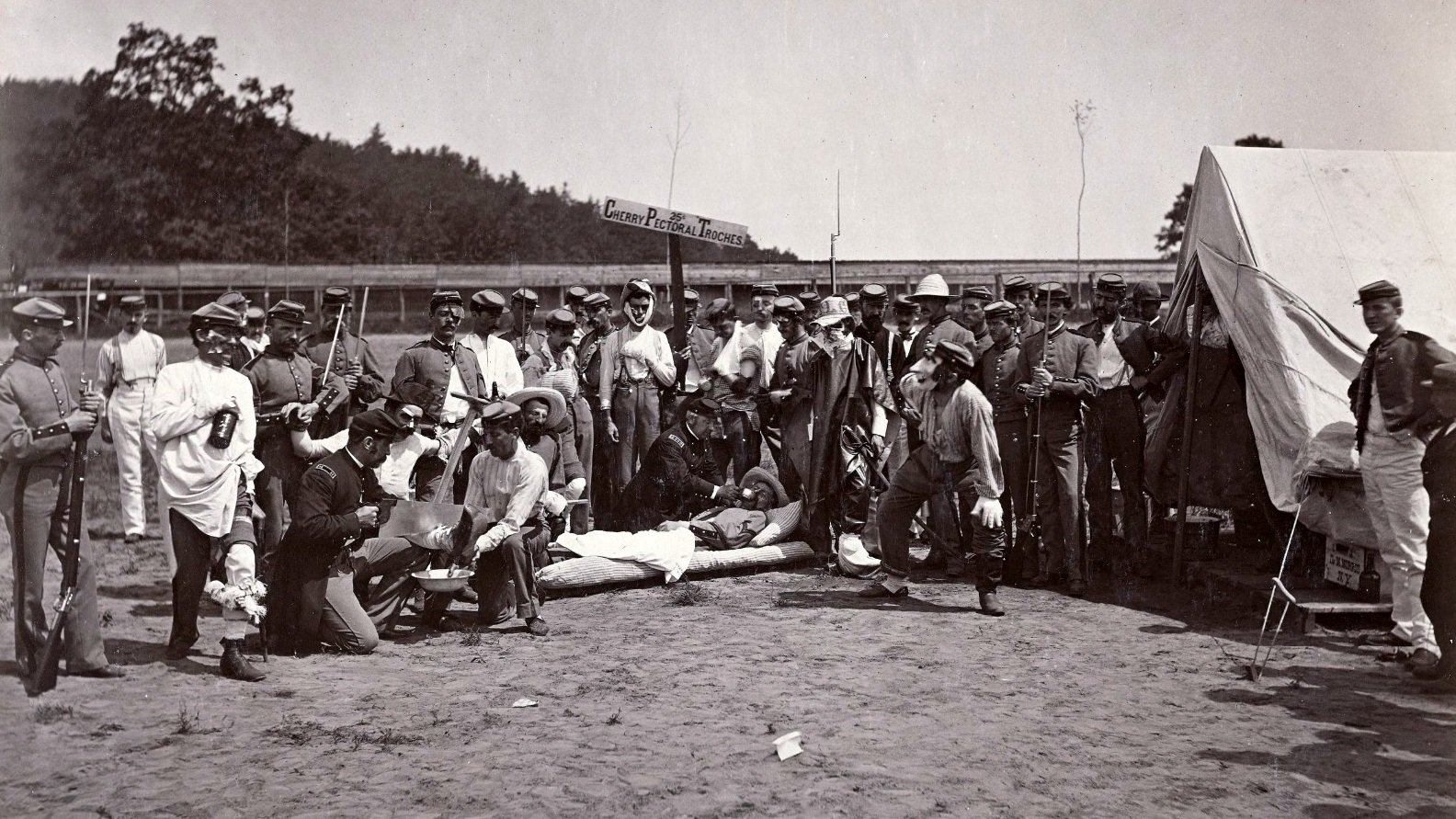
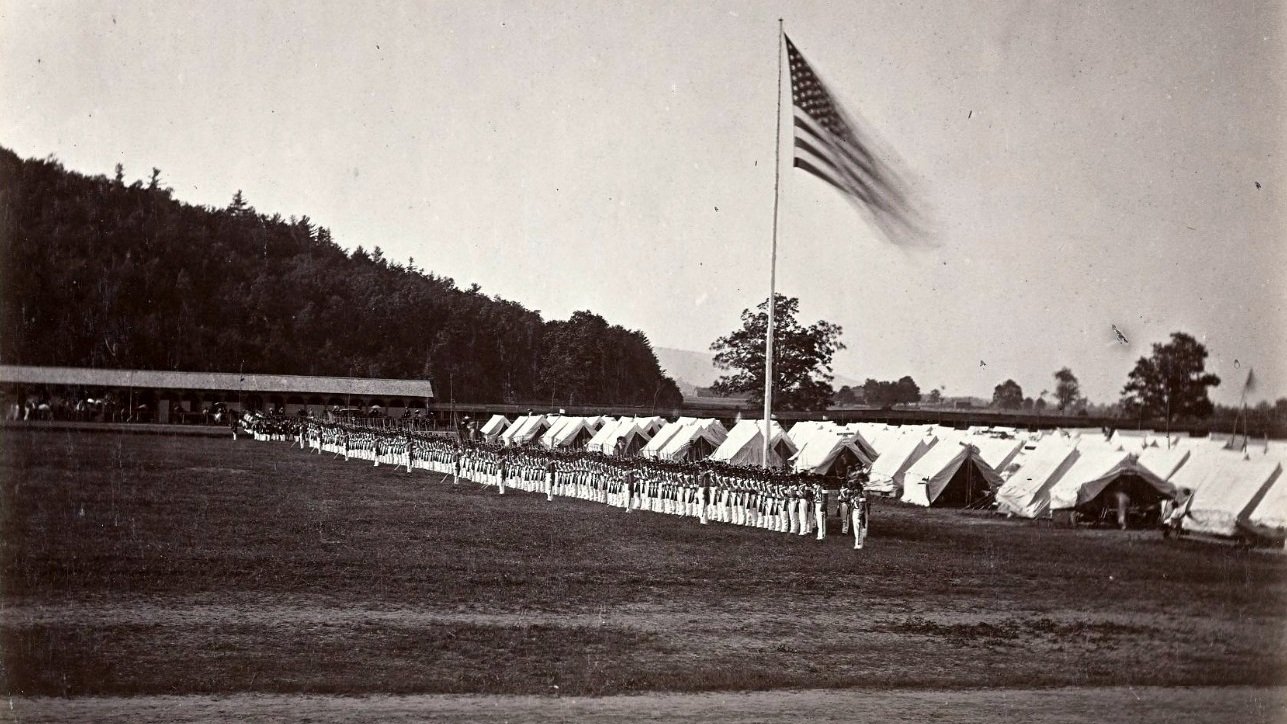

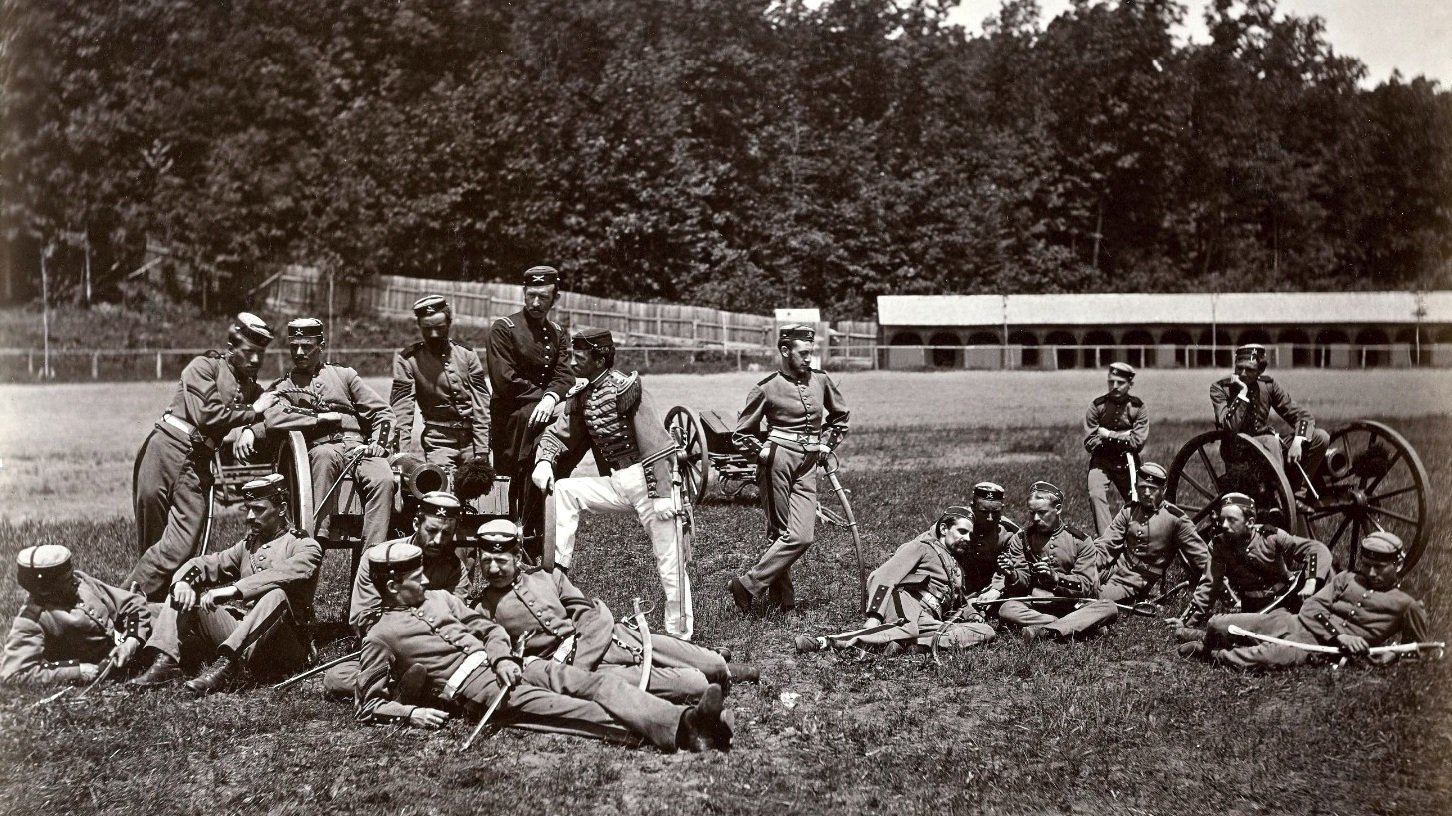
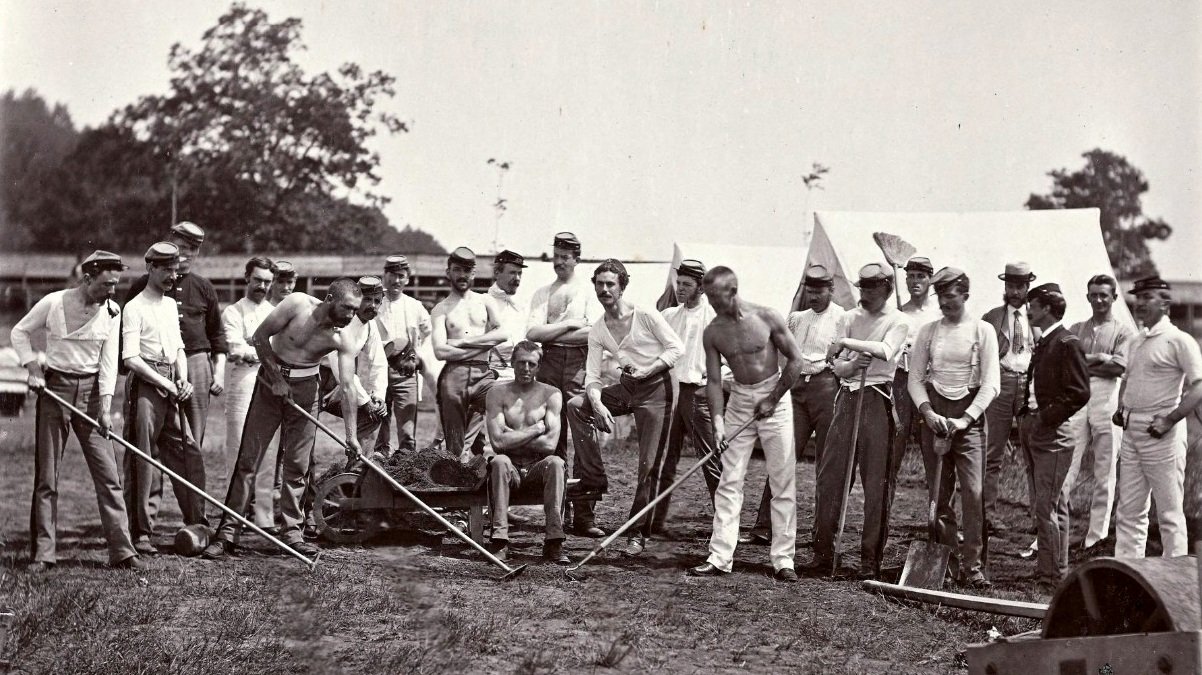
Images from the 7th Regiment NYNG encampment at Glen Mitchell in 1872. (NY Historical Society)
The Glen Mitchell Hotel (Saratoga Springs Public Library - Saratoga Room)
Caleb’s desire to host some of the collegiate action at his resort was evident as he provided for the expenses of both baseball teams to have them play there. He was proud of the baseball grounds he set up for the big games and joked with a reporter about breaking in the field for the season:
“The baseball ground for the great match game... has been nicely levelled and sodded, and Mr. Mitchell says that if a company of “muffs” and “fossils,”...or any other of the lithe and active fellows about town, want to break a few of their fingers and thumbs in a match game, the grounds are at their disposal. ”
A baseball match in Hoboken, NJ 1859 from Harper’s Weekly
When the time came for the college ball games, Caleb would not have the opportunity to enjoy the events as tragedy struck first. On the afternoon of the 13th, as the activities were about to get underway, his brother George took his own life at a camp in the Adirondacks. Unfortunately, Caleb suffered a downward spiral later in his life and mental illness would bring him to the same fate as his brother in 1902.
Historical marker at the site of the Glen Mitchell noting it as the location of the first national collegiate track and field meet held on July 20, 1876.
Intercollegiate sports competition in the United States began with a rowing match between Yale and Harvard in 1852, with baseball being introduced seven years later in 1859. Intercollegiate track and field competition was new in 1874 with the first match only occurring the previous year. Glen Mitchell would play host to the first official national track and field meet of the Athletic Association of American Colleges two years later in the summer of 1876. The baseball tournament at Glen Mitchell was not regarded as a casual affair as it would determine the collegiate champion in the sport. Over multiple seasons of competition, Yale had never bested their rival Harvard. On the afternoon of the 13th, hundreds of fans boarded carriages under cloudy skies to reach Glen Mitchell for the first of a best-of-three series between the “barehanders.” Unfortunately for them and in keeping with the theme of the week, Mother Nature intruded with a thunderstorm. The game was postponed and the anxious players who had already been in town for nearly a week had to wait another day. Their enthusiasm was understandable as they were part of an exciting sport that was evolving rapidly. In a more general sense, interest and enthusiasm for organized spectator sports was steadily increasing in the United States.
“...interest in... sports has been yearly increasing, not only among college students and their immediate friends, and men who were lately students, but among a great many other people who have no special interest in any college... [Athletic] contests between others than collegians are much more common and attract more attention now than formerly. The college boat race is doubtless the most generally interesting, though for certain classes of the community a ball match between professional clubs, and for others, a horse race has superior attractions.”
Baseball had its murky origins in bat and ball games, especially the British game of rounders. Childhood friends and acquaintances recalled the young Ulysses Grant “played ball and was good at it.” The ball game(s) referred to were undoubtedly those earlier games popular in the 1820s-30s that influenced the modern sport of baseball. The earliest baseball clubs were comprised of locals, with names such as the Saratoga Unions and the Schenectady Stars. The sport saw widespread expansion due to its popularity as an activity among soldiers during the American Civil War.
Union prisoners at Salisbury N.C. playing baseball by Major Otto Boetticher (1863)
The 1869 Cincinnati Red Stockings
Baseball underwent a significant transition in the 19th century from a localized amateur spectator sport to a nationwide professional business sport. The transition was not without controversy. New York and the northeastern United States became a bastion for the sport ensuring its long-term survival. With the rapid expansion of the sport after the Civil War, teams began to seek more talented players while players increasingly sought a means to profit from their play. Ulysses S. Grant as President, hosted the first all-professional team, Cincinnati Red Stockings at the White House in 1869. The Red Stockings traveled all over the country helping to nationalize the sport while amassing an incredible 57-0 record on the season. President Grant was also reported to have taken an interest in neighborhood games:
““[President Grant] liked young people, and the boys playing ball behind the White House sometimes had him for spectator and made him umpire in their games. Occasionally he took a hand at the bat, to the delight of the boys, who loved him and had no awe of him.” ”
Despite its popularity and growth, the sport was not without its critics in the 1870s. Some found the gambling tied to games distasteful and accused players of “throwing” games on purpose to make a profit. Individuals like popular Saratoga figure John Morrissey were blamed for corrupting baseball and other sports with betting. Some had an aversion to the amateur simplicity and charm of the game being lost as it transformed into a national industry. They decried how the “national game has degenerated.” In the summer of 1874 professional players boarded a boat to take the game internationally. The Boston Red Stockings and Philadelphia Athletics sailed to England for an exhibition tour to present the game to those more accustomed to the game of cricket. While the games were being played that summer in Saratoga Springs, one of the first baseball Hall of Famers Johannes Peter "Honus" Wagner was in his cradle 375 miles southwest in Pennsylvania. Baseball was evolving rapidly and it would take the efforts of the early players, coaches, owners, and fans to help it realize its full potential as a national and even international sport. This made 1874 a truly pivotal moment in the history of baseball.
“The baseball foolery is again raging all over the country, and the papers are crowded with columns of small type about the Red Stockings &c. We are thankful that so far, our county has been exempt this year. It is a dangerous game, and the exercise is entirely too severe to be healthy.”
American baseball exhibition game in England from Harper’s Weekly Sept. 12, 1874
This 1871 Harvard Baseball Club image showcases some of the equipment used in that era, including; larger/heavier custom bats, a softer/less durable ball and bases with stakes attached. (Harvard University Archives - HUA)
Baseball had evolved to a game that would be very recognizable in modern times but there were some noticeable differences as well. The collegiate teams that took the field at Glen Mitchell in 1874 consisted of nine players in the following positions: pitcher, catcher, shortstop, first base, second base, third base, left field, center field, and right field. Gloves were not used, so the players would typically allow the ball to bounce before catching it. The balls were made of a softer leather covering but featured the familiar “figure-eight” stitching pattern seen in modern balls. Two national associations went defunct in the 1870’s and were replaced by the National League of Professional Base Ball Clubs (now the National League). The game rules became more standardized and the sport increasingly regulated on a national level by the end of the decade.
Jim Fogarty of the Philadelphia Quakers demonstrates bare handed catching.
1874 Base-Ball equipment ad.
The Yale Nine - 1874
Glen Mitchell game players in bold: Standing, left to right: Eugene E. Osborn (shortstop) 1874, George F. Bentley (catcher) 1873, Charles H. Avery (pitcher) 1875, Cortes Maxwell (2nd baseman) 1875, and Walter I. Bigelow (1st baseman) 1877. Seated, left to right: Frank W. Foster (left fielder) 1874, Edward C. Smith (center fielder) 1875; John L. Scudder (substitute) 1874; William Henry Hotchkiss (right fielder) 1875, and Alexander B. Nevin (3rd baseman) 1874. More biographical info on players is at the end of the article.
The Harvard Nine - 1874
Glen Mitchell game players in bold: Front: Herbert C. Leeds (shortstop) 1877, Spinney; standing and seated in chairs: James A. Tyng (3rd baseman) 1876, John F. Kent (1st baseman) 1875, Augustus C. Tower (left fielder) 1877, Columbus Tyler (team captain - center fielder) 1874, Amory G. Hodges (2nd baseman) 1874, Sewall H. Hooper (pitcher) 1875, , Cutler. 1874, Henry K. Thatcher (catcher)1877, Thomas S. Bettens (right fielder). More biographical info on players is at the end of the article. (HUA)
19th century Harvard ribbon (HUA)
An estimated 1500-2000 spectators descended upon the Glen Mitchell estate on the afternoon of July 14th for the first game. The team colors of Blue (Yale) and Magenta (Harvard) were on display throughout the crowd. It was reportedly the Harvard baseball club having their uniforms made that caused Harvard to adopt Magenta as opposed to Crimson for a school color for about a decade. With Yale losing all of the previous eight games against their collegiate rivals, there was little expectation of them winning. The score remained low, reportedly due in part to a strong west wind and to “dead ball” issues. In the 1870s baseballs used in games were not standardized and could be modified with scratching, spitting, or dirt. The same ball was often used for an entire game leading to its deterioration and reducing its playability. Yale pitcher Charles “Ham” Avery had a spectacular day and was credited with throwing the first curveball game in baseball. Since the curveball was not a straightforward pitch, some were opposed to it as a dishonest practice. Nearly two hours in, with Yale posting 4 runs and Harvard scoreless by the ninth inning, the surprising shutout upset was secured and the celebrating was intense:
“Hats went into the air amid deafening shouts, and there was a general hand shaking and embracing. “Hi! hi!” resounded again and again from the rocks of Glen Mitchell, and the crowd rushed into the field pell mell, causing a cessation of the game for some minutes.”
19th century Yale ribbon (HUA)
Harvard vs. Yale 6 year baseball rivalry record (The Saratoga Sentinel July 16, 1874)
Jim Tyng with his facemask in 1877 (HUA)
The second game of the series began in front of a smaller crowd of about 1000 on the steamy July morning of the 15th. President Grant would not be one of them due to a prior commitment to attend a Methodist camp meeting at Round Lake, NY. All eyes were on Yale to see if they could repeat their performance from the first game and come away with the collegiate championship. The game was a bit higher-scoring affair with Yale coming out on top 7-4, reportedly due to a new “lively ball” being put into play. In the ninth inning, Yale catcher George Bentley was struck by a ball and the bridge of his nose was severely injured highlighting the lack of protective equipment available to players at the time. This was an all-too-common injury for the sport and just three years later a player from the opposing Harvard team, Jim Tyng, would insist on wearing the first recorded catcher mask in play. The safety device was later patented and a version remains in use to the present. Tyng was wone of two players that took to the field at the Glen Mitchell games that summer to play in the major leagues, playing with the Boston Red Caps (later Braves) in 1879 and the Philadelphia Quakers (later Phillies) in 1888.
Game 2 Stats
GAME 1 STATS
A few hundred miles south of the collegiate games in Saratoga, the Boston Red Stockings played the New York Mutuals at the Union Grounds in Brooklyn on the 14th and the Philadelphia Athletics at Jefferson Park on the 15th. The Athletics and Red Stockings would leave on the 16th for their trip to England and one of the Harvard baseman John Kent, fresh off his games in Saratoga, had the incredible opportunity to join the Boston club for the trip. Boston, including hall of fame pitcher Albert Spalding (chief promoter of the Doubleday baseball myth), would eventually win the National Association championship in October with an impressive season record of 52-18. Over the next five years, Yale remained more competitive in the rivalry with Harvard, winning 8 of 18 matchups, and by 1887 the collegiate rivals were 29-29.
Game stats for game at Glen Mitchell on July 17, 1874.
With the champions determined in two games at Glen Mitchell, a more relaxed exhibition game of “picked nines” between Harvard alumni with members of the Yale & Princeton clubs vs. the Harvard nine was played on the morning of the 17th. In front of a comparably small crowd of 200, the picked nines beat the Harvard nines 19 to 15. Some of the players were alumni that had participated in some of the early collegiate contests like Alexander Van Rensselaer from the Princeton class of 1871.
Archie at age 19 from Frank Leslie’s Illustrated - 1866
One of the players who took the field on the 17th was Archibald “Archie” McClure Bush, who had rose to fame as an early baseball star with the Albany (NY) Knickerbockers just after the Civil War. Bush entered the war at age 17 and served as an officer of the 95th New York Volunteer Infantry and aide de camp to Brigadier General James Clay Rice. Bush played ball throughout his time at Harvard College in the 1860s-70s and even served as president of the National Association of Base Ball Players, the first organization to govern American baseball. He was said to have batted against the first curveball from William Arthur “Candy” Cummings at a game between Harvard and the Brooklyn Excelsiors in 1867. He died tragically of typhoid fever in 1877 at age 31 while on his honeymoon in England.
Another player among the picked nines was Princeton student Henry “Harry” C. Bush, who was instrumental in establishing the collegiate baseball and football teams at his university. Bush went into the field of law, eventually becoming a judge in the state of Washington but like many of his fellow athletes he remained “keenly interested in athletics, especially baseball.” He attended games and served as a scorer right up until the final years of his life.
At mid-day President Grant gave a reception at Congress Hall, shaking hands with many fans and athletes. Later in the evening the President and first lady attended a hop (dance) at Congress Hall that was touted as “a brilliant affair.”
President Grant 1875
Congress Hall Parlor
Many of the baseball players also participated in other sports. Yale basemen Cortes Maxwell and Al Nevin participated in the “New York Herald Olympian Games” track tournament at Glen Mitchell in the days following the baseball tournament. The track conditions were less than desirable after the recent rains, leaving muddy ground to navigate. Nevin won the 100 yard running race with a time of just over 10 seconds. Maxwell won first place in the 120-yard hurdle race, set an intercollegiate record, and won a James Gordon Bennett cup despite having to recover from a stumble at the beginning of his race.
The collegiate foot races at Glen Mitchell from Frank Leslie’s Illustrated
Maxwell (seated) & Nevin (standing) - 1874
Nevin, who lost his brother William in the Civil War, played professionally for a season with the (Elizabeth, NJ) Resolutes in 1873. Perhaps the fact that the Resolutes went 2-21 in their first and only season soured Nevin on playing professional ball. He seemingly grew disillusioned with his life as he reportedly left his family and lived under an assumed name in Florida until his death.
Amory Hodges of Harvard served as an umpire through 14 games for the National Association of Professional Base Ball Players and National League of Professional Baseball Clubs from 1874-75.
Yale pitcher “Ham” Avery turned down lucrative offers from two professional teams but did serve as an umpire for some professional games. Avery continued his education becoming a successful lawyer, working for some time under Judge Alphonso Taft a former member of the Grant administration and father of William Taft.
Edward Curtis Smith - 47th Governor of Vermont
Most of the players who took to the field for the games in 1874 did not end up in professional sports. Many would become professionals including lawyers, bankers, physicians, a newspaper editor, and a clergyman. Among this crowd was Yale center fielder Edward Smith who became an attorney and successful businessman after graduation. He would be present at U.S. Grant’s New York City funeral in 1885 as part of the staff of Vermont Governor Samuel Pingree, a position Smith would himself hold at the turn of the 20th century. The 27 players who took the field that summer in Saratoga were born in a dozen different states (and one in India), but they formed a bond and passion through baseball that they would relive through letters and reunions the rest of their lives. Many would later look up to them as those who had helped forge the game in its early glory days. They could take pride in the part they played in the evolution of the game and making it more accessible to the masses.
Just a few miles north of Glen Mitchell, following along the same ridgeline was Mount McGregor. As the baseball games were being played in 1874, local businessman Duncan McGregor had workers creating a new mountaintop resort there. About a decade later, in the summer of 1885, U.S. Grant would spend his final days finishing his memoirs in a cottage at the expanded resort there. Beginning in the early part of the 20th century, the former site of the resorts’ Hotel Balmoral just yards away from Grant’s Cottage would host baseball games. First, the patients of the tuberculosis sanitorium opened in 1913 on the mountain formed the Mount McGregor Marvels baseball team. Then came veterans of World War II when the mountain played host to a Veterans Camp. Lastly were the inmates of the state correctional facility on the mountain who played softball there until 2013. The “field of dreams” on the mountain is now a part of Grant Cottage Historic Site and its historic use as a place for many from diverse backgrounds, some struggling with life, to come together to enjoy the national pastime will be remembered. It can once again be a place of community, fun, and learning.
Mount McGregor Marvels baseball team ca. 1920s
Polo Grounds Game from Harper’s Weekly 1886
Former president U.S. Grant moved to a home in Manhattan in the 1880s. On May 1st, 1883 he attended a grand-opening baseball game at the Polo Grounds in Manhattan between the New York Gothams (later Giants) and the Boston Beaneaters (formerly the Red Stockings). A New York record crowd of 15,000 filled the grandstands indicated how far the sport had come. Grant, smoking his cigar, “sat in the rear of the grandstand, and apparently enjoyed the game, as he at times took part in the applause given the players.” The Beaneaters would lose the game 5-7, facing four future hall-of-famers, but went on to win the National League pennant for the year.
The former Glen Mitchell Road to North Broadway over which thousands passed to see the 1874 games. (Photo 2024)
The Glen Mitchell estate continued to host equestrian, agricultural, and sporting events including “the great Canadian national game” of lacrosse. A very popular toboggan run was added in the 1880s. The hotel closed in the mid-1880s and was reopened as a catholic school which operated there until 1917 with the building being demolished a few years later. Coincidentally the land would later be used for the construction of the Maple Avenue Middle School which opened in 1992 complete with baseball diamonds. The once popular carriage road that President Grant and thousands of others travelled on from North Broadway in nearby Saratoga Springs is now just a wooded walking path. Echoes of the crack of the baseball and shouts of the crowd can still be heard if one has enough imagination to conjure the wonder of that day 150 years ago when a President watched the national past time.
STAY TUNED FOR INFO ON A VINTAGE BASEBALL EVENT BEING PLANNED
FOR THE SUMMER OF 2024!
1874 harvard & yale players - brief bios
Harvard Players
Herbert Corey Leeds (Short Stop) (1855-1930) Born in Boston, MA. Harvard Class of 1877. Was an amateur golfer & golf course architect.
Thomas Simms Bettens (Right Fielder) (1851-1907) Born in Vevay, IN. Harvard Class of 1874. Greek/Latin teacher in IL and NY. A memorial fountain dedicated to Bettens was installed at Harvard College.
Columbus Tyler Tyler (Center Fielder - Team Captain) (1852-1905) Born in Boston, MA. Harvard Class of 1874. Worked the legal profession in the Philippines and then as a Land Office Receiver in Seattle, WA.
Amory Glazier Hodges (2nd Baseman) (1852-1917) Born in Roxbury, MA. Harvard Class of 1874. Major League umpire 1874-75. Wall Street Stock Broker in New York City, NY
John Fuller Kent (1st Baseman) (1853-1934) Born in Newton, MA. Harvard Class of 1875. Played with the Boston Red Stockings on an exhibition tour of England in 1874. A teacher in Massachusetts and later principal in New Hampshire schools.
Sewall Henry Hooper (Pitcher) (1853-1924) Born in Boston, MA. Harvard Class of 1875. Was a lawyer and businessman in Massachusetts.
James “Jim” Alexander Tyng (3rd Baseman) (1856-1931) Born in Philadelphia, PA. Harvard Class of 1876. Professional baseball player with the Boston Red Caps and Philadelphia Quakers. He was the first player to wear a mask as a catcher in 1877, later patented. He was the first Harvard player in the major leagues.
Augustus Clifford Tower (Left Fielder) (1853-1903) Born in Cambridge, MA. Harvard Class of 1877. Wall Street Banker in New York City, NY.
Henry Knox Thatcher (Catcher) (1854-1929) Born in Bangor, ME. Lost a brother Charles in the Civil War. Harvard Class of 1877. Medical degree from Jefferson College 1881. Was a physician in Maine.
Edward Wood Walker (1853-1925) Born in Cincinnati, OH. Harvard Class of 1874. Was a surgeon in Cincinnati, OH.
Harvard Alumni Players
Archibald “Archie” McClure Bush (1846-1877) Born in Albany, NY. Harvard Class of 1871. Was an officer of the 95th New York Volunteer Infantry during the Civil War. He served as president of the National Association of Base Ball Players.
James Bradish Wells (1849-1916) Born in Utica, NY. Harvard Class of 1871. Chief Clerk of the U.S. Assay Office in Helena, MT.
Nathaniel Stevens Smith (1847-1912) Born in Westfield, MA. Harvard Class of 1869. First pitcher of college baseball to make a tour of the United States. Worked as a lawyer in New York City, NY.
Yale Players
William Henry Hotchkiss (Right Fielder) Yale Class of 1875.
Alexander Brown Nevin (3rd Baseman) (1850-1921) Born in Pittsburgh, PA. Yale Class of 1874. Played in the Major Leagues briefly with the Elizabeth Resolutes (1873). He was the first Yale player to play in the major leagues. Businessman in CA and FL.
George Francis Bentley (1850-1921) Born in Montrose, PA. Yale Class of 1873 (Law School after). Practiced law in PA & NY.
Walter Irving Bigelow (1855-1936) Born in Grafton, MA. Yale Class of 1877. Was a businessman and broker in Boston, MA.
Eugene Ernest Osborn (1854-1914) Born in Norwalk, CT. Yale Class of 1874. Was a lawyer & railroad president in Michigan.
Cortes “Corty” Maxwell (1851-1925) Born in Alexandria, MO. Yale Class of 1875. Also played collegiate football and track & field. Was a lawyer & newspaper editor in Iowa.
Edward Curtis Smith (1854-1935) Born in St. Albans, VT. Yale Class of 1875. Was a lawyer & 47th Governor of Vermont.
Francis “Frank” Wade Foster (1852-1914) Born in Bibb County, GA. Yale Class of 1874. Was a businessman in Georgia.
Charles Hammond “Ham” Avery (1854-1927) Born in Cincinnati, OH. Yale Class of 1875. Was an umpire for professional baseball and lawyer in Florida.
John Lewis Scudder (1853-1930) Born in Chennai, India. Yale Class of 1874. He was a clergyman in MA, MN and NJ.
William Stewart Halsted (1852-1922) Born in New York City, NY. Yale Class of 1874. He became a surgeon and was a founding professor of Johns Hopkins Hospital in Baltimore, Maryland.
Princeton Players
Princeton Baseball Club 1874-75. (Princeton University Archives)
Henry “Harry” Crane Beach (1852-1922) Born in New York City, NY. Princeton Class of 1874. He became a lawyer and then judge in the state of Washington. He was involved in controversies surrounding immigration law.
Alexander Van Rensselaer (1850-1933) Born in Burlington, NJ. Princeton Class of 1871. He played tennis and cricket at professional levels. President on the Philadelphia Orchestra Association and the Board of Drexel University.
Princeton Baseball Club 1870. (Princeton University Archives)
Sources:
History of Saratoga - Summer in Saratoga: 1874 by Charlie Kuenzel Saratoga Today Aug 8, 2019
https://ourgame.mlblogs.com/on-the-battlefront-the-new-york-game-takes-hold-1861-1865-71228bc958d7
The Great Intercollegiate Regatta of 1874 New York Almanack July 25, 2021
https://digitalcollections.nyhistory.org/islandora/search/glen%20mitchell?type=dismax
https://saratogatodaynewspaper.com/history/item/15980-suicide-in-town-hall
https://briefingsfromaspacitymetalhead.blogspot.com/2016/01/suicide-at-city-hall-jan-29-1902.html
https://saratogaspringsrebirth.com/index.php/articles/north-broadway
Our County and its People: A Descriptive and Biographical Record of Saratoga County, New York by Anderson, George Baker 1899
History of the Seventh Regiment of New York, 1806-1889, Volume 2 by Emmons Clark · 1890
https://www.thecrimson.com/article/1888/12/22/early-history-of-harvard-yale-baseball-it/
https://saratogacountyfair.org/about/
Presidents and Baseball: Ulysses Grant and the Cincinnati Red Stockings https://potus-geeks.livejournal.com/1142662.html
Baseball and the Civil War Forging America’s National Pastime by Zachary Brown
Baseball in the Nineteenth Century: From Sport to Business by Brian Burres (2018)
Ulysses S. Grant: His Life and Character by Garland, Hamlin (1898)
1874: A Year Like No Other The Saratoga Preservation Society March 18, 2019
Chronicles of Saratoga: Glen Mitchell, Resort to Mission by Evelyn B. Britten The Saratogian May 20, 1960
Suicide at City Hall Jan. 29 1902 by George DeMers Jan. 29, 2016
https://mightycaseybaseball.com/2019/10/06/happy-birthday-al-nevin/
May 1, 1883: Mickey Welch wins first game in New York Giants franchise history by Stephen V. Rice
COVID-19 ruins another tradition involving baseball and the White House by Joe Guzzardi
https://www.cooperstownexpert.com/player/fred-goldsmith/
https://www.findagrave.com/memorial/7298663/henry-crane-beach
https://willistonblogs.com/archives/tag/ham-avery/
https://ourgame.mlblogs.com/mark-twain-on-baseball-c7b4fbe548ad
Traps and Triggers The Spirit of the Times Aug. 16, 1873
The Glen Mitchell Property The Argus (Albany, NY) April 3, 1886
Vermont at the Funeral - Orleans County Monitor, 8/10/1885
The Weekly Radii (Canajoharie, NY) July 29, 1875
Albany NY Morning Express Aug. 18, 1872
The Daily Saratogian Aug. 18, 22, 1871, Sept. 15, 1874
Watertown Daily Times, July 21, 1874
The New York Daily Tribune, July 18, 1874
The New York Daily Herald, July 14, 1874
The New York Times, July 25, 1872; Feb. 3, 1918
The Daily Telegraph (London, England), Aug. 10, 1874
The Corrector (Sag Harbor, NY), July 18, 1874
The Boston Evening Transcript, July 15, 17, 1874
The Boston Globe, July 13, 14, 15, 16, 1874
The Boston Post, July 13, 14, 15, 16, 1874
The Saratoga Sentinel, July 16, 1874
The Daily Shreveport Times, April 11, 1872
The Inter Ocean, June 10, 1872
The Brooklyn Daily Eagle, Aug. 21, 1867
